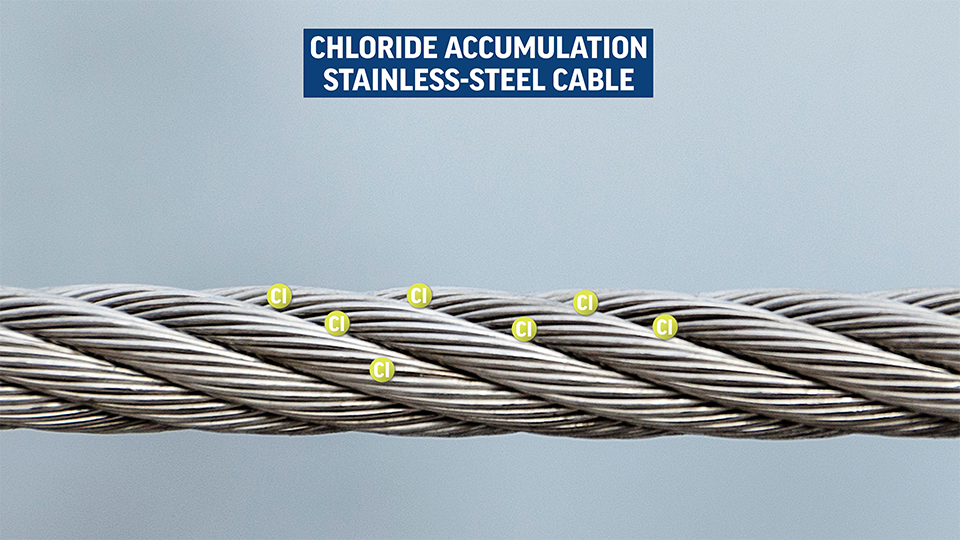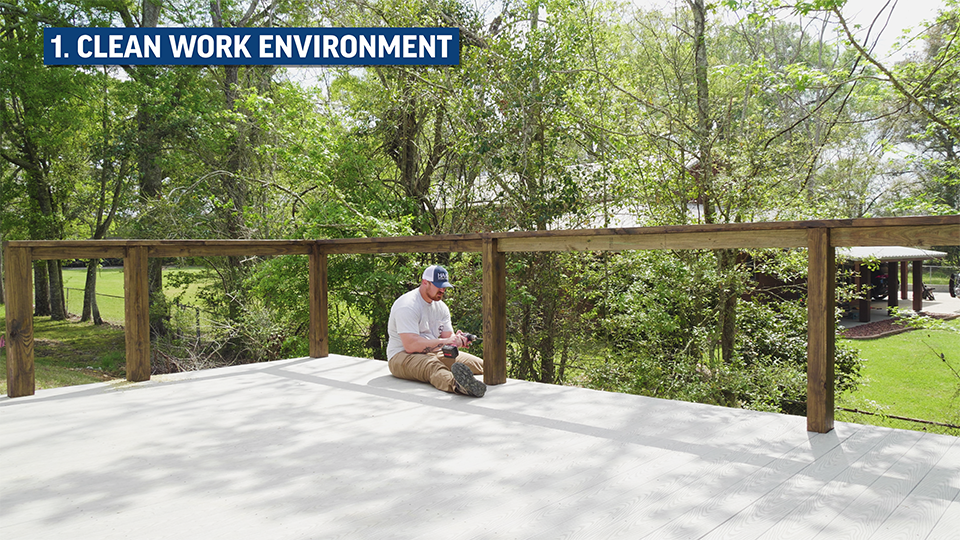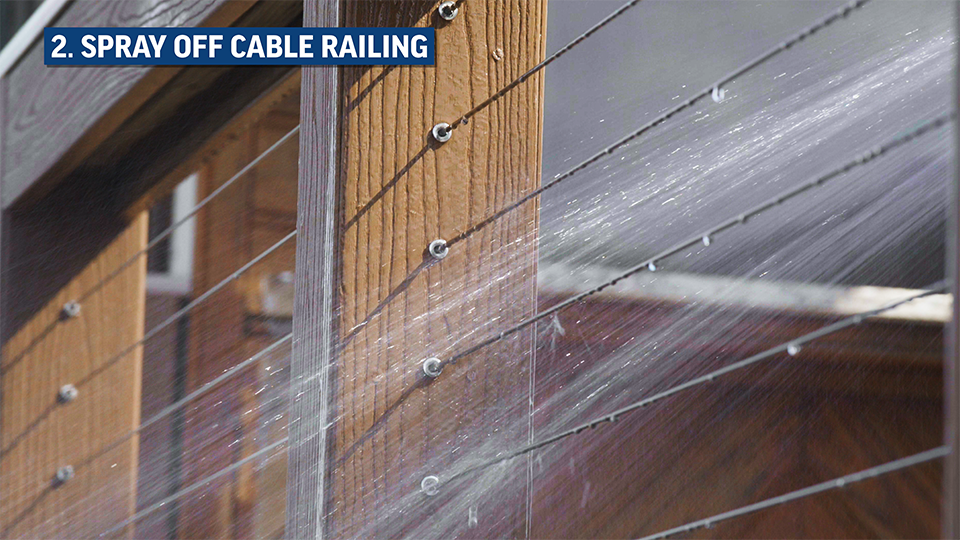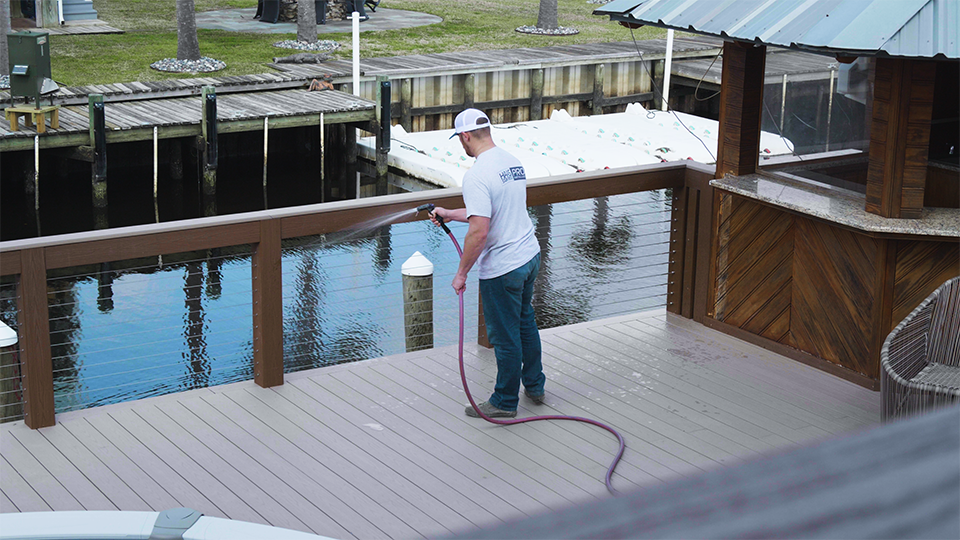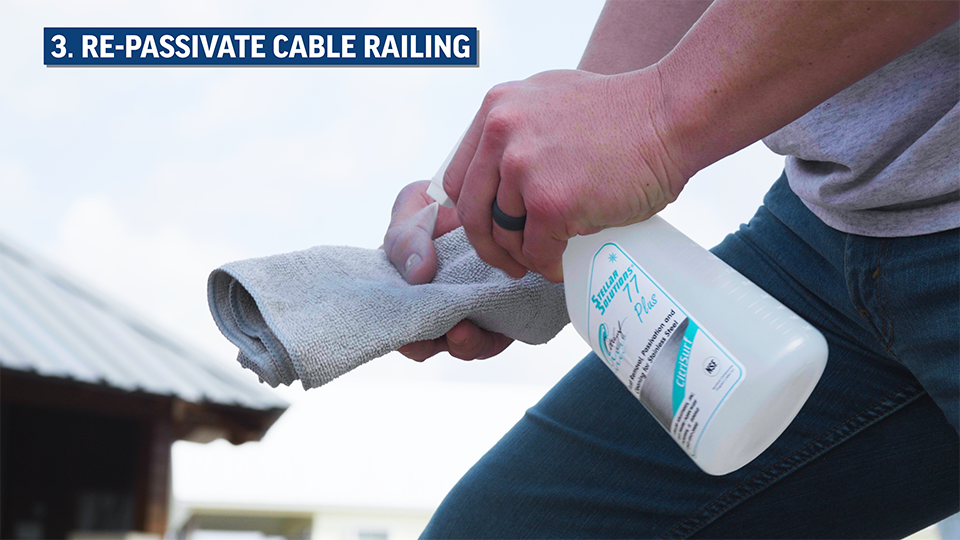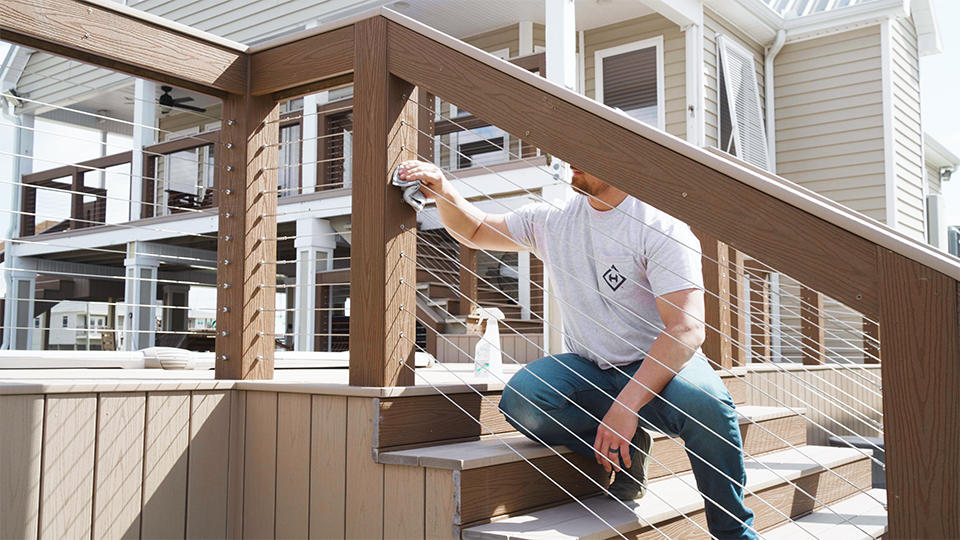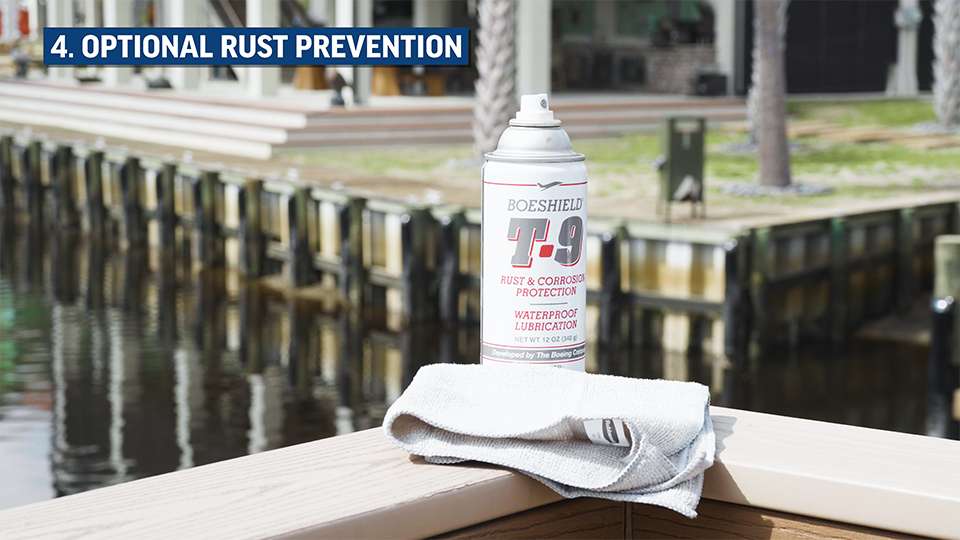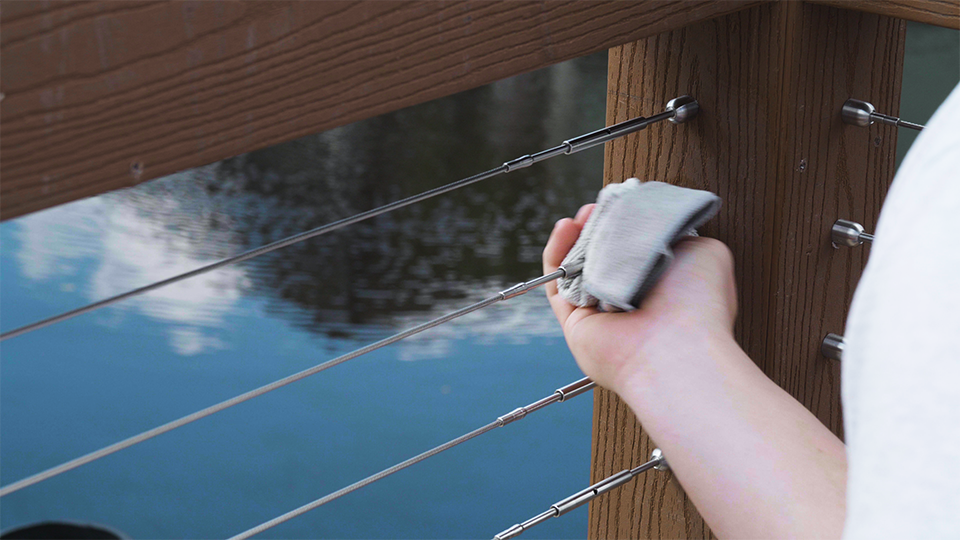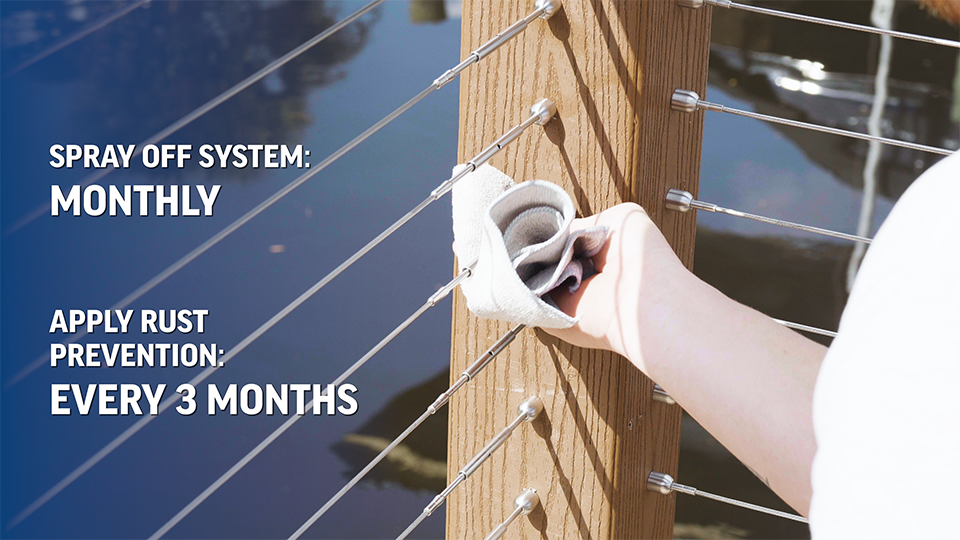The cable railing systems that we manufacture here at HAAS Stainless (HAAS REVO,
and HAAS AXIS) are made from high-quality Type 316 Stainless Steel, which makes
them great for a wide variety of outdoor environments. While this type of stainless steel is extremely rust- and
corrosion-resistant, it's important to understand that stainless steel can be susceptible to rust and corrosion if
left untreated in a high-salinity environment.
Chloride Accumulation on Cable Railing
The rust can form on stainless steel due to salt particles is referred to as “chloride accumulation”. Chloride accumulation occurs when salt particles accumulate in the same location over time and are not removed. In the case of cable railing systems, chloride accumulation commonly occurs in between each of the strands that make up the cable, but in some cases can also form on the components themselves. Luckily, the steps you’ll need to take top prevent rust and chloride accumulation from building up on your cable railing system are easy and straightforward.
Clean Work Environment
Debris, sand, and dirt can hold salt particles better than clean stainless steel. We recommend having the cleanest work area possible to reduce the likelihood of foreign contaminants getting on the cable and components during installation and will make post installation cleaning much easier.
Rinse Cable Railing System in Fresh Water
Immediately after your system has been installed, we recommend heavily spraying off your cable and components with fresh water to remove any potential salt deposits or foreign contaminants from your system.
Re-Passivate the System
Once your system has had a chance to dry, your next step will be to clean and protect your system from rusting corrosion. For cleaning and re-passivating your system we recommend using Citrisurf 77+. Passivation refers to the process of removing any free iron from the surface of stainless steel using an acidic solution. This will ensure that your system will start off as corrosion resistant as possible.
Additional Rust Prevention for High-Salinity Environments
After cleaning your system with Citrisurf , we recommend using Boe Shield T as a rust preventative for high salinity environments like waterfront properties or beach houses, where your system will experience consistent contact with salt deposits. The combination of these two solutions will give your system the best chance of defending against rust and corrosion in saltwater environments.
Ongoing Maintenance Schedule
Over the course of your system's life, it’s very important to keep up with preventative maintenance. On a monthly basis, we recommend spraying off your cable and components with fresh water to knock off any salt deposits from accumulating, and then reapplying any rust preventatives on a quarterly basis. In the rare event that you do see rust forming on your cable or components, then be sure to act fast and remove the rust using Citrisurf 77+ or another similar product.
For a more in-depth bulletin regarding cable railing maintenance in saltwater environments, click here.

